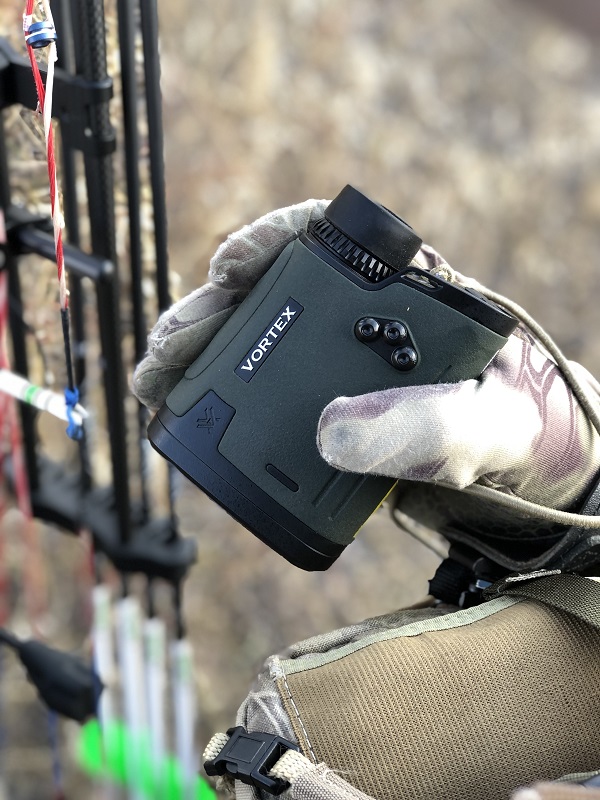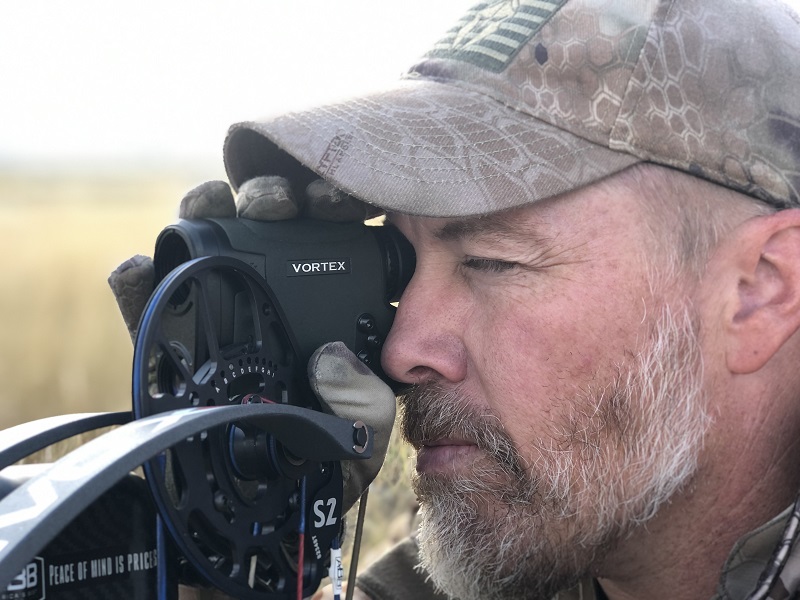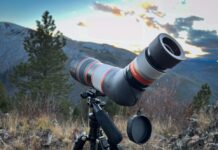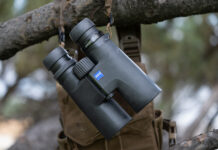Vortex Viper HD 3000
I used to be really good at judging yardage. Nowadays, I may have a bit of a handicap due to being so reliant on the new rangefinders that are on the market! They take the guesswork out of what yardage lays before you more than ever. They also have become so simple to operate that it makes no sense to not have one. When given the chance to review the new Viper HD 3000 rangefinder by Vortex, I was excited to be able to do so.
Vortex Optics first came out with the Ranger series rangefinders many years ago. I became very fond of the Ranger and used it extensively back in the day.
Vortex has really upped their game with the new rangefinders they have out now. The new Viper HD 3000 seemed like a great rangefinder to test as it boasts being extremely fast and accurate. A 7x magnification and 25mm objective are just a few features of this compact little tool. More info here.
First Impression
When I opened the box, I noticed this rangefinder also came with many of the same options as before. The Viper HD 3000 came with its own carrying case that can be buckled onto your pack or with your existing binocular harness. The added tether allows you to attach the rangefinder, so it doesn’t walk off. It is a bit smaller and lighter than the bigger brother, the Razor HD 4000, and fits a bit better in my Alaska Guide Creations Kodiak binocular harness. I opted not to use the included carrying case and tether that it came with.
It is relatively light at just over 9 ounces and fits in my hand well. The feel of the ArmorTek outside made it easy to hold onto without slipping at all. Buttons are arranged in good locations that are easily operated with one hand.
The focus was easily adjustable by turning the diopter ring, and a quick setup by toggling through the features allowed me to pick the LED brightness and other features that are offered.
The eye relief was good as well, with 15.5mm, and can be dialed in by the user by moving the eye cup in or out for the best fit.
The Viper HD 3000 also incorporates a utility clip that can be repositioned from one side to the other to allow for user preference or removed altogether if not needed.
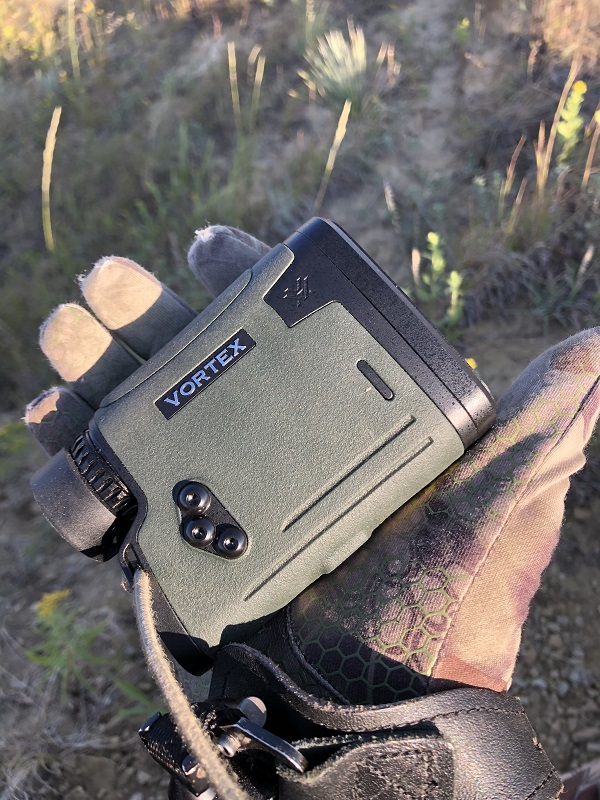
Field Testing
While using this rangefinder, I did find it to be plenty fast and maybe just a hair quicker than what I have been using. Every precious millisecond counts, especially when you are ranging prior to a shot. You just never know when conditions or the situation is going to change.
Reflective targets can be ranged out to 3000 yards. Non-reflective target ranging capability is up to 2000 yards. The closest distance I could get was 6 yards. I like to use the scanning feature to ensure I am getting the range correct while looking at a deer down range as this will feed you ranges at all times while holding down the measure button.
I had no problem ranging deer out to several hundred yards quite easily. Getting out way far, you will need to remain rock solid to get an accurate reading. This rangefinder does offer the option to mount to a tripod if needed. Accuracy is within 1 yard out to 100 yards, and it seems to be within 2 yards after 100 yards from my use. It’s not quite as accurate as the Razor HD 4000, which is advertised at .5 yards out to 200 yards and 1-yard accuracy to 2000 yards. The HD 3000 is a great option for archery, while the HD 4000 would be better for rifle hunters. The display shows .1 yard increments out to 999.9 yards. There are four targeting modes that include normal, first, last, and ELR.
Viper HD 3000 Targeting Modes
Normal mode is recommended for most situations in which you would hunt. With an effective range on reflective targets out to 3000 yards, this mode also incorporates the scan feature that will adjust as you move the rangefinder over various objects.
First mode comes in handy when you have a critter standing amongst various objects but is the closest to you. Using this mode, is very ideal when ranging a smaller target that is amongst larger objects in close proximity.
Last mode is exactly the opposite of First mode. In Last mode. it will give you a readout of the farthest object that you have when in scan mode. Handy when that critter is standing behind trees.
ELR mode (Extended Lazer Range) will allow you to range targets out to and even past 4000 yards. It’s very effective to use this mode when you can put the rangefinder on a tripod. You need to be still in order to get the most out of this feature. The readout will take a tick longer but is still extremely fast.
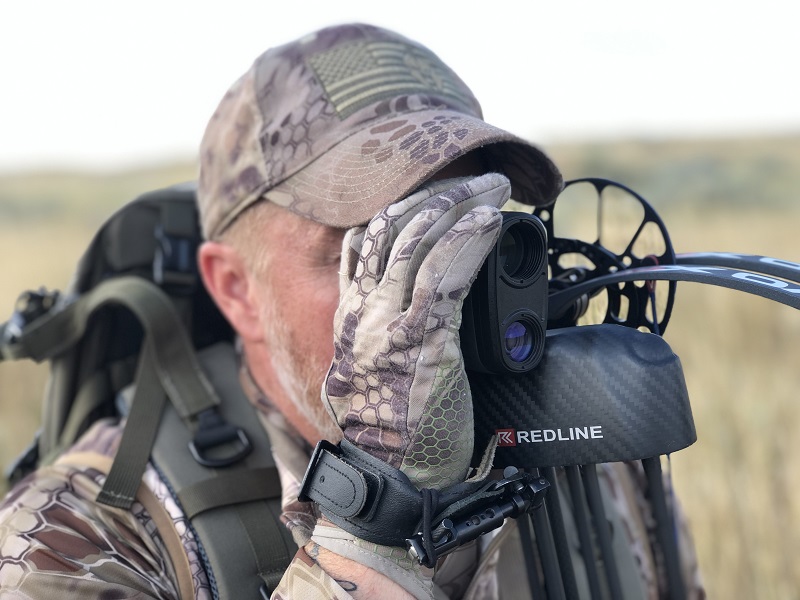
Viper HD 3000 Ranging Modes
HCD (Horizontal Component Distance), which will automatically adjust for the shot angle and make the corrections for what yardage to use. This is a great feature for both rifle and archery hunters.
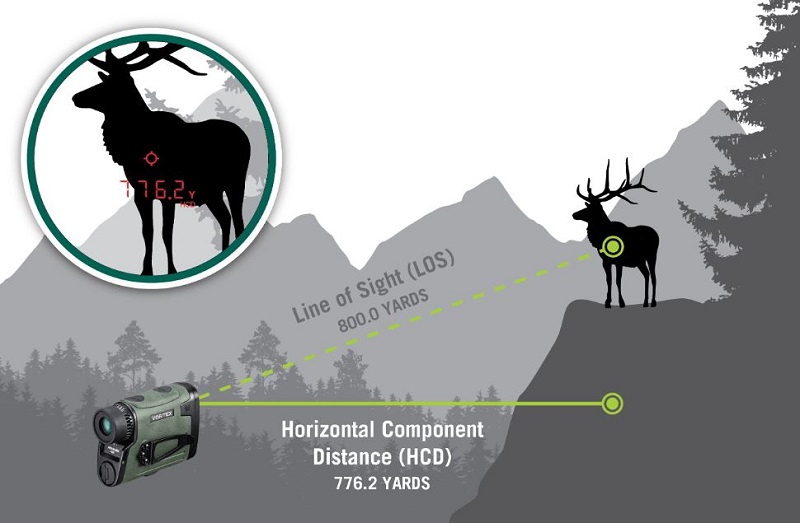
LOS (Line OF Sight) is commonly used for long-range rifle shooters who use some type of ballistic program while shooting.
I am not sure how cold weather will affect this rangefinder as I have not been in those conditions at this time since testing. Be sure and subscribe to the discussion thread below as I’ll update there once the cold weather hits. My guess is that Vortex has rectified any low temp issues several years ago with some of their early models of other rangefinders.
End User
For someone looking for a compact rangefinder that can almost do it all, I think the Viper HD 3000 would be a perfect fit for them. I was most impressed by its quick range readouts as seconds count when preparing for the shot.
With an MSRP of $599.99, it makes it a good option to have a great rangefinder with HD quality glass as well. Technology really has come a long way since I began using my first rangefinder that resembled a block of wood. Click here for a list of dealers.
Comment or ask Jared questions here.
Below are the full statistics for the rangefinder:

More optics reviews available here.













